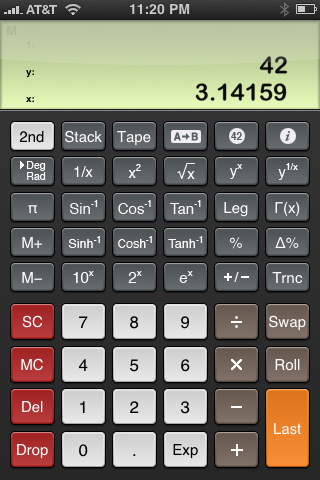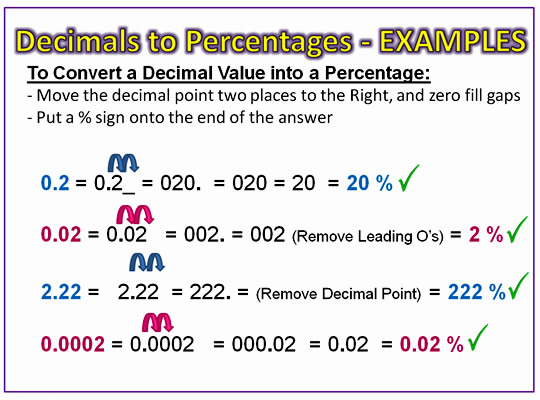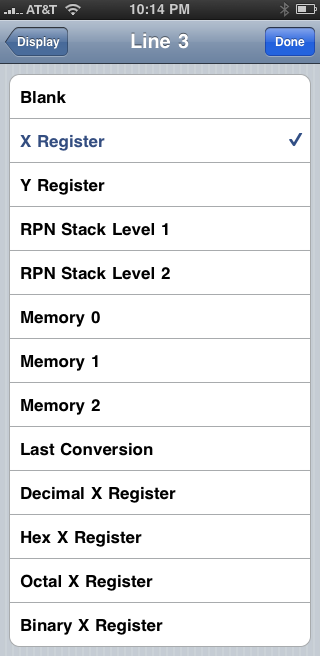

- #A pcalc three decimals how to#
- #A pcalc three decimals mac os#
- #A pcalc three decimals archive#
- #A pcalc three decimals mac#

Includes many functions for converting between different weights and measures. Programmable functions via a simple mini language.Ĭan be controlled & programmed via Apple Events.īalloon Help for every button, menu & dialog item. If you use System 6.0.x or earlier, here is what you are missing: Please note that it *requires* System 7.x.x. PCalc is a neat simulation of a programmable scientific calculator. So, I read all the submission guidelines carefully and packaged it up.Įnclosed is a binhex file containing a submission for your archives.
#A pcalc three decimals archive#
I quickly realised there was this thing called the Info-Mac Archive which was mirrored all around the world, and I could send my app to them, and it would then be mirrored everywhere automatically for people to download. You ran this one application, and it could get you more applications. Our class had discovered this application called Fetch which quickly got passed around. On December 23rd 1992, I decided I would release it freely to the world as a present.Īgain, this was back in 1992 - FTP sites were the new hotness. See here for more screenshots of the original release.
#A pcalc three decimals mac#
I added a colour interface to it as well, even though I didn't actually have a Mac that could display colours. I started sharing it with a few friends on the course, and slowly improved it over the next six months until the point where it was actually useful and did a lot more than just help with programming. I simply wrote what I wanted to use myself. In truth it was really a Programmer's Calculator. The application needed a name (we didn't have “apps” back then) and I decided on PCalc, officially short for Programmers' Calculator. I didn't think I needed any of the stuff in the middle. System 7 was new, so I eventually got a copy of the massive Volume VI to see what had changed there. Eventually, I started to get the internal logic working, and built a user interface around it all.

We didn't have the Internet back then - well, no web at least - so that was basically all I had to go on. I bought the books Inside Macintosh, Volumes I, II, and III, and sat down to figure it all out.
#A pcalc three decimals mac os#
The built-in Mac OS calculator of the day was a very simple affair, and so I decided I would write a calculator that could do binary and hex, to help me with my programming. Take note of “a small project just to do X”, this will be referred to many times during this story.
#A pcalc three decimals how to#
I was looking for a small project to learn how to program my new Mac properly, and I remembered the graphics I'd done for the control panel, and thought that they would work well for a calculator as well. So I sold all my synthesizers and my ST, and bought one of the latest Mac Classics - 4 meg of RAM, a 40 meg hard disk, and a 512x342 1-bit display. I had come to the conclusion that I was not going to be the next Jean Michel Jarre, but I really liked the way the Mac user interface worked in comparison to my old Atari. Skeuomorphism has been around a lot longer than Corinthian leather.Īt around the same time, we'd started coding using THINK Pascal, and I had begun to explore the Macintosh programming APIs in my own time. I figured it had to look authentic, and handcrafted a set of custom 1-bit black and white fake LCD digits and little buttons that you could push in. Sadly, it doesn't survive to contradict me, but my design was likely impeccable. It was to be implemented as a Hypercard stack. One of the class projects was to design a simulated control panel for a central heating system - setting temperatures, letting you switch heat and water on and off separately, and so on. I was a student at Glasgow University's Computing Science department, taking a class in Human Computer Interaction on how to build good user interfaces. PCalc actually started out in 1992 as a design for a central heating control panel. The app you've known for all these years. PCalc is twenty thirty years old on the 23rd of December 2022, so I thought I should take the opportunity to look back at how it has evolved over the last two three decades. In some cases, a lot longer than they've been thinking. Many people using PCalc on their shiny devices today don't realise that the app has been around for a lot longer than they think. This is an updated version of a piece I wrote for the 20th anniversary, with an extra ten years of history!


 0 kommentar(er)
0 kommentar(er)
